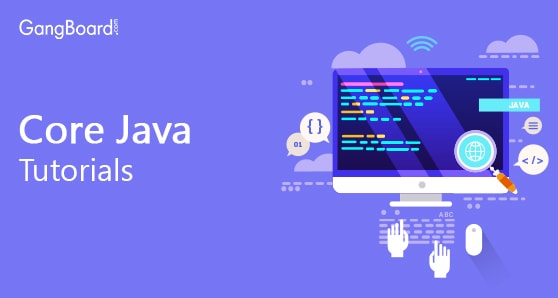
At compile time, Java knows which method to invoke by checking the method signatures. Parameters with different sequence of a data typesĮarlier we have seen method signature. There are three ways to overload a method.Ģ. We can perform polymorphism by ‘Method Overloading’ and ‘Method Overriding’Ĭheck this link to read more on Polymorphism Method Overloading:Ī class having multiple methods with same name but different parameters is called Method Overloading Runtime polymorphism (Dynamic binding) – Method overriding Compile time polymorphism (Static binding) – Method overloadingĢ. There are two types of Polymorphism in Javaġ. We will see detailed explanation with some example programs about Polymorphism in the post related to Polymorphism. All the four may draw different shapes like Circle, Triangle, and Rectangle. Assume we have four students and we asked them to draw a shape. Let’s break the word Polymorphism and see it, ‘Poly’ means ‘Many’ and ‘Morphos’ means ‘Shapes’. Polymorphism allows us to perform a task in multiple ways. We will see detailed explanation with some example programs about Inheritance in the post related to Inheritance.
#Corejava tutorial pro#
Apple MacBook Pro and Lenovo Yoga classes extend the Laptop Class to inherit the properties of the Laptop Class.
#Corejava tutorial code#
The main purpose of Inheritance is Code Reusability.Īssume we have a Class named Laptop, Apple MacBook Pro, Lenovo Yoga. As per the above definition, the Child class inherits the properties of the Parent Class. Child class is also known as Derived Class. Let’s say we have two classes namely Parent Class and Child Class. Inheritance is a process where one class inherits the properties of another class. Here I give basic idea about these terms in the next post we will see detailed explanation.

We need to understand three terminologies for sure in Java such as JDK, JRE and JVM. We will see this in detail in later part of this Java Tutorial. The Java language’s programming is based on the concept of OOP.
#Corejava tutorial mac#
Yes, it runs on a multiple platforms such as UNIX, Windows, Mac OS.

Java is a high-level programming language originally developed by Sun Microsystems in 1995. We use the for loop only when we exactly know the number of times, we want to execute the block of code.Let’s see what we are going to learn in this Java Tutorial now It enables us to initialize the loop variable, check the condition, and increment/decrement in a single line of code. In Java, for loop is similar to C and C++. Let's understand the loop statements one by one. However, there are differences in their syntax and condition checking time. In Java, we have three types of loops that execute similarly. The execution of the set of instructions depends upon a particular condition. However, loop statements are used to execute the set of instructions in a repeated order. In programming, sometimes we need to execute the block of code repeatedly while some condition evaluates to true. The switch permits only int, string, and Enum type variables to be used. However, it will also be a constant value. While using switch statements, we must notice that the case expression will be of the same type as the variable. It evaluates a Boolean expression and enables the program to enter a block of code if the expression evaluates to true. It is the most basic statement among all control flow statements in Java. Let's understand the if-statements one by one. In Java, there are four types of if-statements given below. The condition of the If statement gives a Boolean value, either true or false. The control of the program is diverted depending upon the specific condition. In Java, the "if" statement is used to evaluate a condition.

There are two types of decision-making statements in Java, i.e., If statement and switch statement. Decision-making statements evaluate the Boolean expression and control the program flow depending upon the result of the condition provided. Java provides three types of control flow statements.Īs the name suggests, decision-making statements decide which statement to execute and when. It is one of the fundamental features of Java, which provides a smooth flow of program. Such statements are called control flow statements. However, Java provides statements that can be used to control the flow of Java code. The statements in the code are executed according to the order in which they appear. Java compiler executes the code from top to bottom. Next → ← prev Java Control Statements | Control Flow in Java


 0 kommentar(er)
0 kommentar(er)
